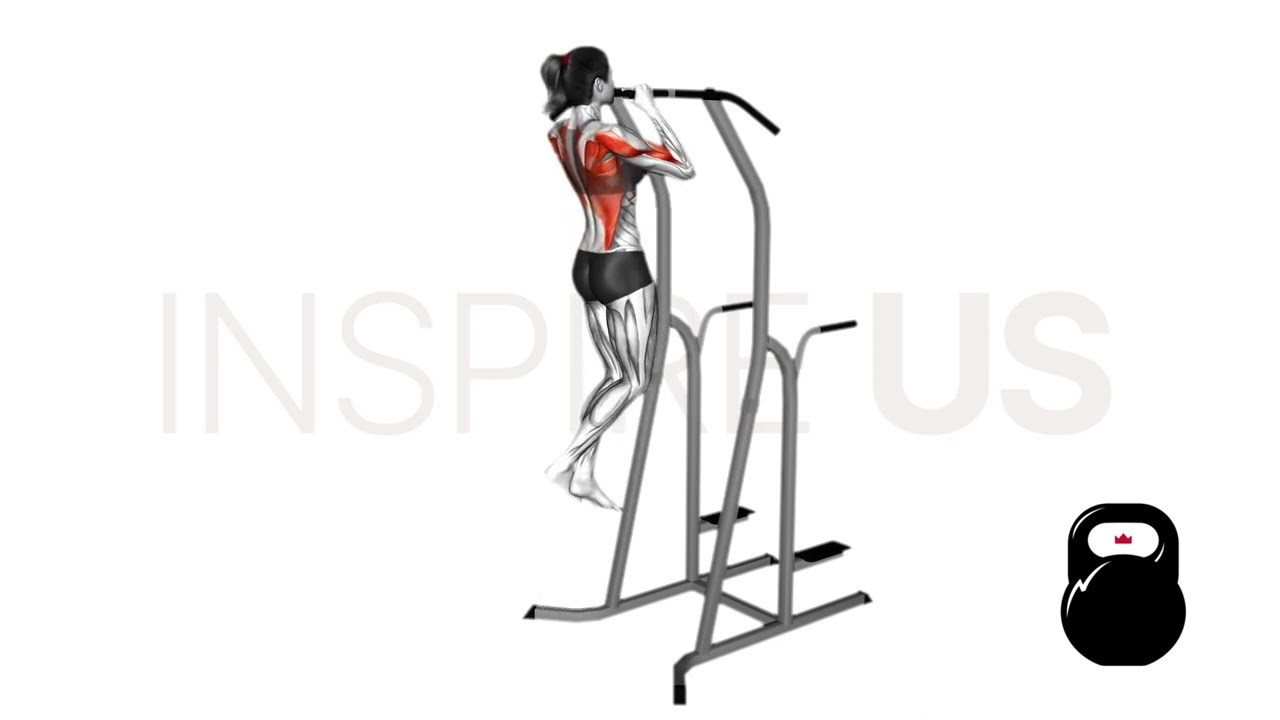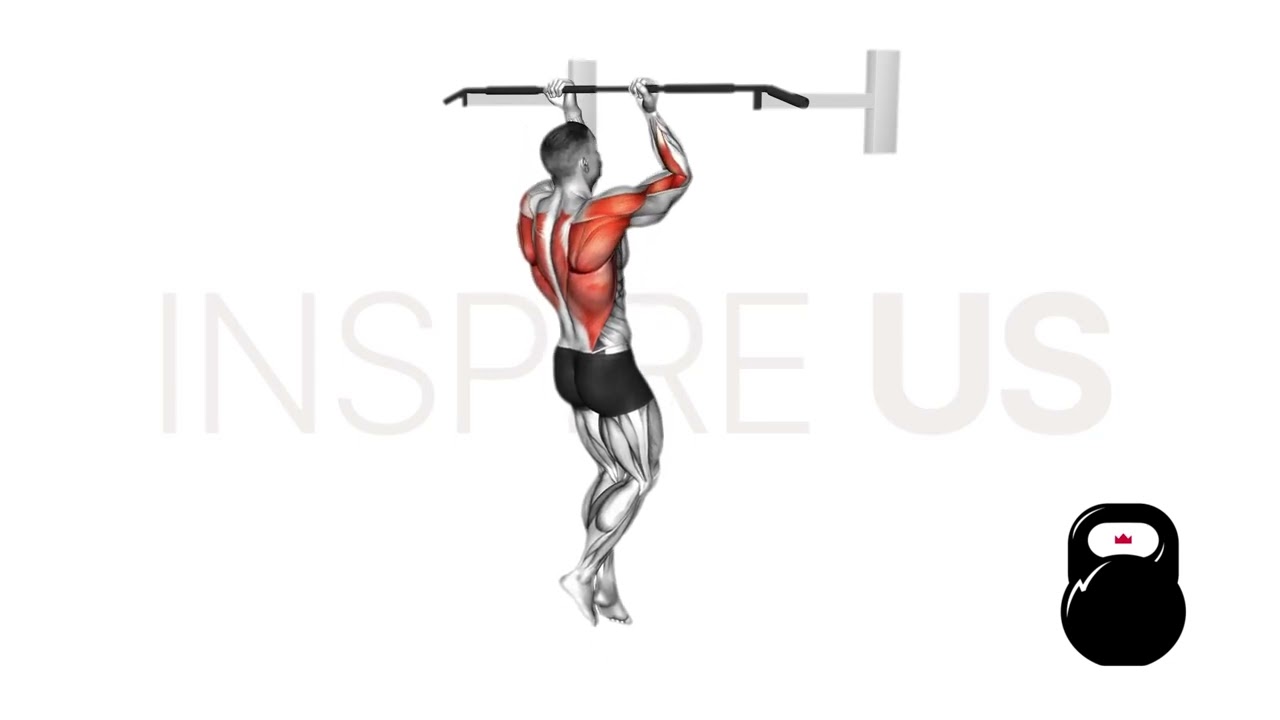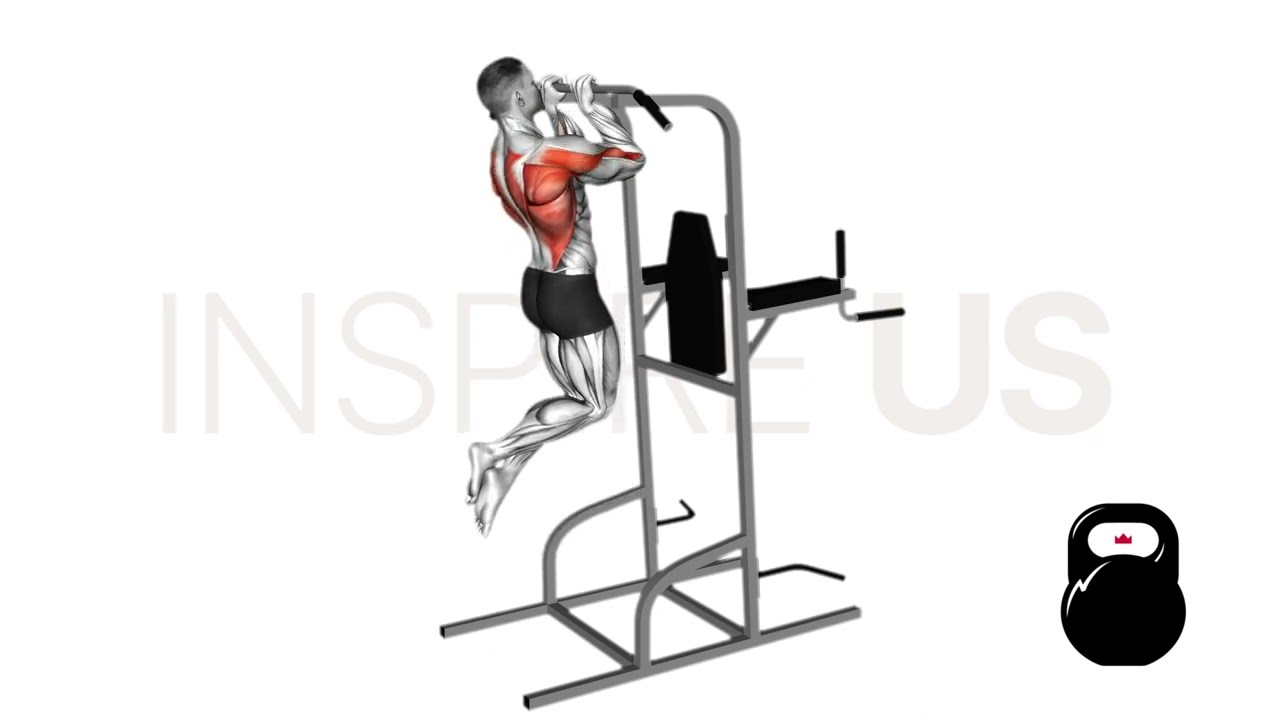3 Best Pull Ups for Biceps (with Pictures!)
Being a primarily back-focused compound movement, the pull-up itself is less than ideal for directly working the biceps brachii.
The biceps may be better targeted by altering the position and orientation of the hands while performing a pull-up. The more inward-facing and close the hands are, the more the biceps are worked.
The best pull ups for biceps include:
- Neutral Grip Pull-Ups
- Chin-Ups
- Close Grip Pull-Ups
Best Pull Ups for Biceps
For Full Elbow Flexor Development: Neutral Grip Pull-Ups
Though not strictly a biceps-focused pull-up variant, neutral grip pull-ups target all three major forearm flexor muscles along the arm.
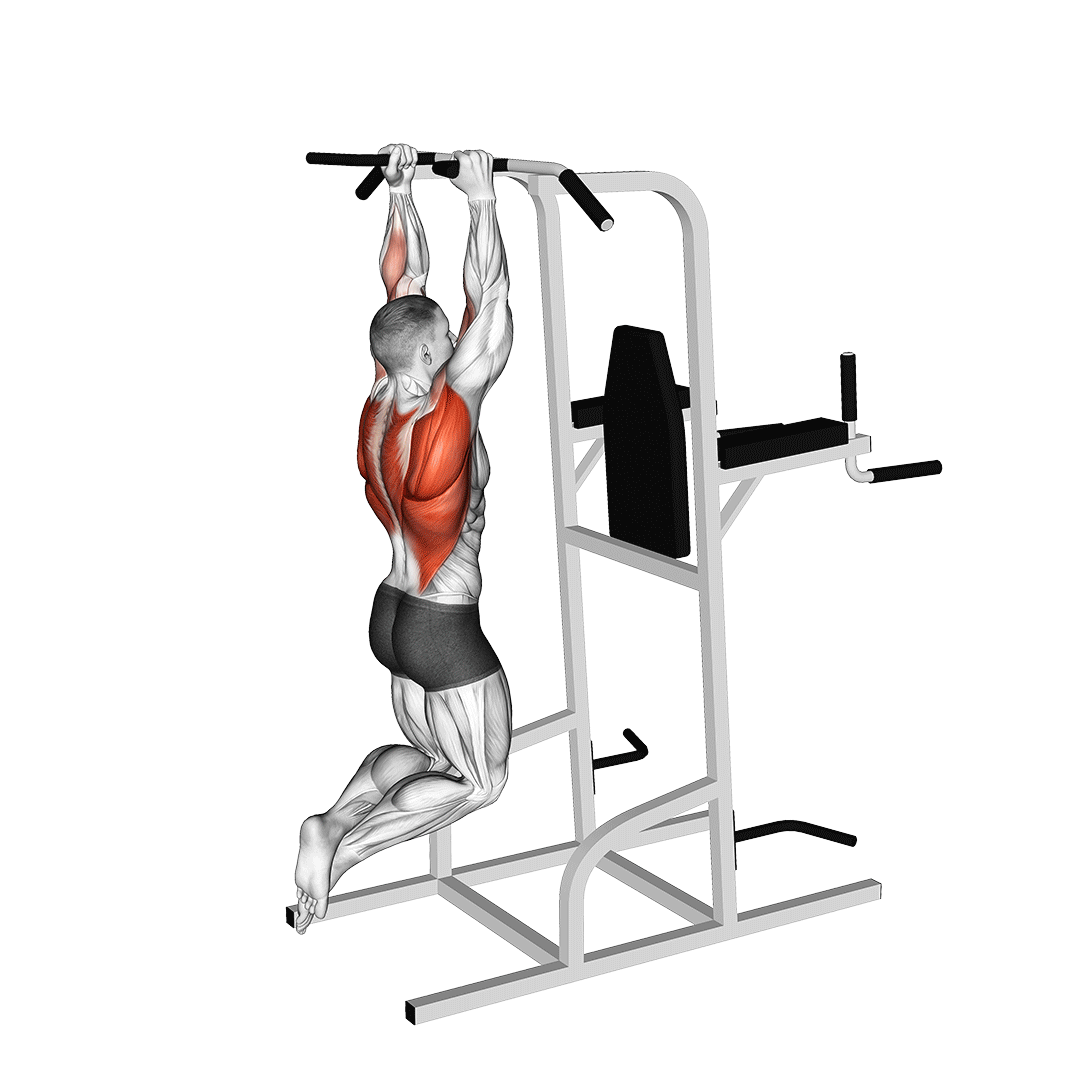
Apart from the biceps, this means that the neighboring brachialis and brachioradialis are targeted to a sufficient degree as well.
As a close cousin to the regular pull-up, the neutral grip variant simply involves the palms facing each other throughout the set.
Unlike with pronated grip pull-ups, hand placement (within shoulder-width apart) is less influential on biceps contraction and can be set according to the lifter’s preference.
Equipment Needed
To perform pull-ups with a neutral grip, a pair of parallel bars positioned over the lifter’s head will be needed.
Sets and Reps Recommendation
Neutral grip pull-ups are ever so slightly easier to perform than conventional pull-ups, as the greater involvement of other elbow flexor muscles will increase force generation.
3-4 sets of 8-12 repetitions should suffice - though further volume should be employed the more advanced the athlete is.
Common Mistakes to Avoid
The neutral grip pull-up may cause the forearm muscles to prematurely fatigue - leading to underworked back muscles.
To avoid this, lifters should focus on initiating and sustaining the pull through their lats, as if pulling their chest towards the bars. As is the case with other pull-up variations, the muscles of the arms are meant to act solely in a secondary capacity.
How-to:
- To perform a repetition of the neutral grip pull-up, the lifter will begin by reaching upwards and grasping a pair of parallel bars using a neutral grip.
- Hanging freely from their hands, the lifter then contracts their latissimus dorsi and pulls themselves upwards - drawing the elbows out to the sides of the trunk as their scapula retracts.
- Once the handles are beneath the chin, the lifter slowly reverses the motion and lowers themselves in a controlled manner.
- With the arms again extended overhead, the repetition is considered to be complete.
For True Biceps Emphasis: Chin-Ups
Though technically an entirely separate exercise, chin-ups are the inarguable champion of biceps contraction among all other types of pull-up.

With a fully supinated (underhand) grip and a narrow hand placement, the chin-up is likely any lifter’s top choice for working their elbow flexor muscles.
Of course, with greater emphasis on the muscles of the arms comes reduced emphasis on those of the back.
Though the lats and other back muscles are still targeted quite significantly, lifters should be aware that the chin-up is comparatively less effective at developing the back than other pull-up variants.
Equipment Needed
Chin-ups will only require a pull-up bar.
Sets and Reps Recommendation
Like neutral grip pull-ups, chin-ups are somewhat easier than conventional pull-ups as more force is produced as a whole.
As such, 3-4 sets of 8-12 repetitions should provide enough of a challenge to most novice and intermediate athletes.
Common Mistakes to Avoid
Lifters performing the chin-up should avoid an excessively wide hand positioning, as this can place the biceps in a disadvantageous position, increase elbow strain and ultimately lead to a less effective exercise.
Keep the hands within shoulder-width apart and avoid the use of a false grip for maximal arm muscle recruitment.
How-to:
- To perform a repetition of the chin-up, the lifter will reach upwards and set their hands narrower than shoulder-width apart along a pull-up bar.
The palms should be facing inwards, elbows close together and the legs hanging freely off the floor at the start of the repetition. - From this position, the lifter squeezes their lats and initiates the pull - continuing by contracting their biceps and drawing their entire body upwards along a vertical line.
The elbows must be pulled out towards the sides of the ribs as the head rises over the bar so as to avoid limiting range of motion. - Once the head is raised high over the pull-up bar and the shoulders are nearly parallel with the hands, the lifter slowly disengages the tension in their scapula and lowers themselves back downwards.
- With the arms once again extended overhead, the repetition is considered complete.
For Using an Overhand Grip: Close Grip Pull-Ups
In cases where the use of a supinated grip is not quite an option (such as with elbow irritation or weak biceps) - simply performing conventional pull-ups with a narrower grip can help.
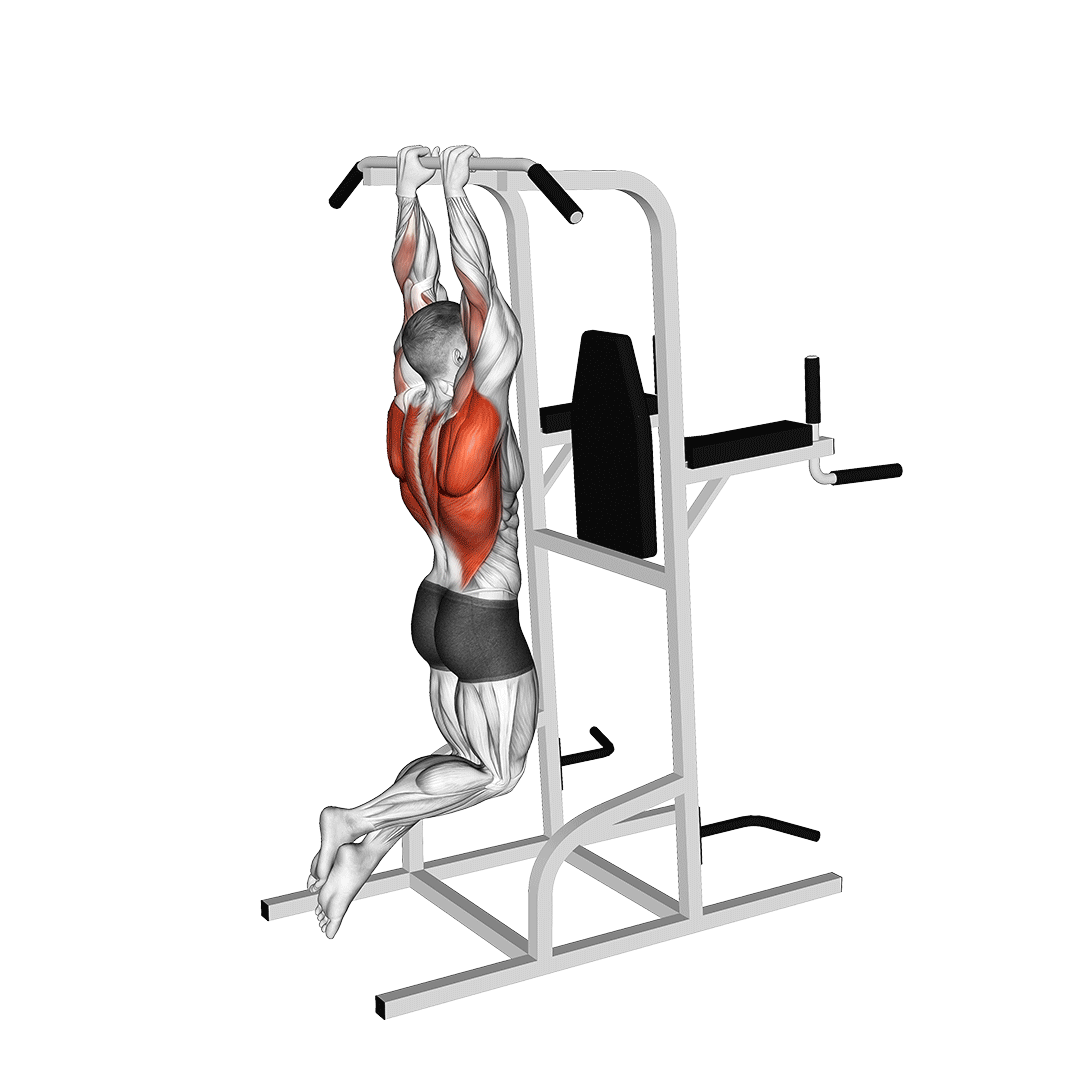
Though not quite at the level of a chin-up, close grip pull-ups allow for greater emphasis on the elbow flexor muscles while still retaining a pronated grip. Apart from a closer hand positioning, the movement itself is practically identical to a conventional pull-up.
Equipment Needed
Only a pull-up bar will be needed.
Sets and Reps Recommendation
Close grip pull-ups may be limited by fatigue accrued within the smaller muscles of the arms.
Keeping total volume between 2-4 sets of 8-12 repetitions should suffice for the majority of novices and intermediates.
Common Mistakes to Avoid
Close grip pull-ups may be limited by elbow positioning. Lifters should ensure they draw the elbows out to the sides as the scapula retracts, allowing for a more vertical path to the torso and a larger range of motion.
How-to:
- To perform a repetition of the close grip pull-up, the lifter begins by reaching up and grasping the pull-up bar in a double overhand grip, hands set shoulder-width apart or narrower.
- Ensuring the feet are hanging off the floor, the shoulders are in a neutral rotation and the core is engaged, the lifter then pulls themselves upwards by contracting their lats.
- As the body rises upwards, and the elbows bend, the lifter retracts their scapula behind their back and tucks their elbows out to the sides of their torso.
- Once the head is raised over the pull-up bar, the lifter reverses the movement in a slow and controlled manner - completing the repetition once back in their starting position.
Which Variation of Pull-Up is Best for the Biceps?
In order to better emphasize the biceps brachii, adopting a closer and more supinated grip is essential. The more these characteristics are present in a pull-up variant, the more the biceps are worked.
Knowing this, we can safely say that the chin-up is the unequivocally best “pull-up” for recruiting the biceps.
Remember to avoid any variation of pull-up if you have a history of shoulder, elbow or rotator cuff issues. Speak to a medical professional prior to attempting them.
References
1. Youdas, James W et al. “Surface electromyographic activation patterns and elbow joint motion during a pull-up, chin-up, or perfect-pullup™ rotational exercise.” Journal of strength and conditioning research vol. 24,12 (2010): 3404-14. doi:10.1519/JSC.0b013e3181f1598

